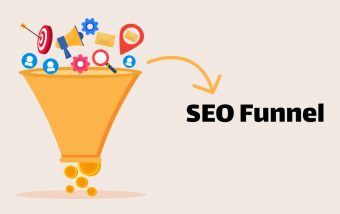What Does ML Mean In Text? Decoding The Social Media Lingo
Nov 28, 2025

Nov 28, 2025

Nov 28, 2025

Nov 28, 2025

Nov 28, 2025

Nov 27, 2025

Nov 27, 2025

Nov 26, 2025

Nov 26, 2025
Sorry, but nothing matched your search "". Please try again with some different keywords.


‣ Pinterest SEO refers to the set of practices and strategies that help in ranking content on Pinterest and gain visibility.
‣ It helps businesses to attract their target audience and drive organic traffic to their websites. So, they use it to promote their products and services.
Even though Pinterest brings to mind aesthetic home decor, cool street fashion, and pinned mouthwatering recipes, it is actually more than that.
Especially in the digital marketing space, Pinterest plays a vital role in driving audience engagement and boosting organic traffic.
Since over 570 million users visit Pinterest monthly to explore and curate their favorite pins, it holds the potential to reach an audience base of nearly 32.5 million with a single ad.
Moreover, the report from Thunderbit points out—
“Pinterest ads have been shown to deliver 32% higher return on ad spend (ROAS) than other digital platforms”.
So, naturally, Pinterest is becoming a key interest for anyone looking for ways to grow their organic website traffic.
But unlike other socials, Pinterest also acts like a search engine, where users look for new products, brands, and whatnots. So, like Google, ranking in Pinterest searches is quite essential.
And, for that, the right SEO strategy should be implemented. In this blog, I am going to dive into the core aspects of Pinterest SEO to explore—
Stay tuned!
To explain in simple words, Pinterest SEO refers to the optimization practices and strategies that help boost content visibility and drive organic traffic.
Unlike traditional SEO, Pinterest SEO primarily focuses on the major ranking factors for Pinterest — engagement metrics and social media shares. That is, it doesn’t rely on technical SEO or backlinking methods as such.
Additionally, relevant keywords for Pinterest posts are identified and used in a completely different way than traditional SEO keywords. So, the keyword research and optimization techniques also vary.
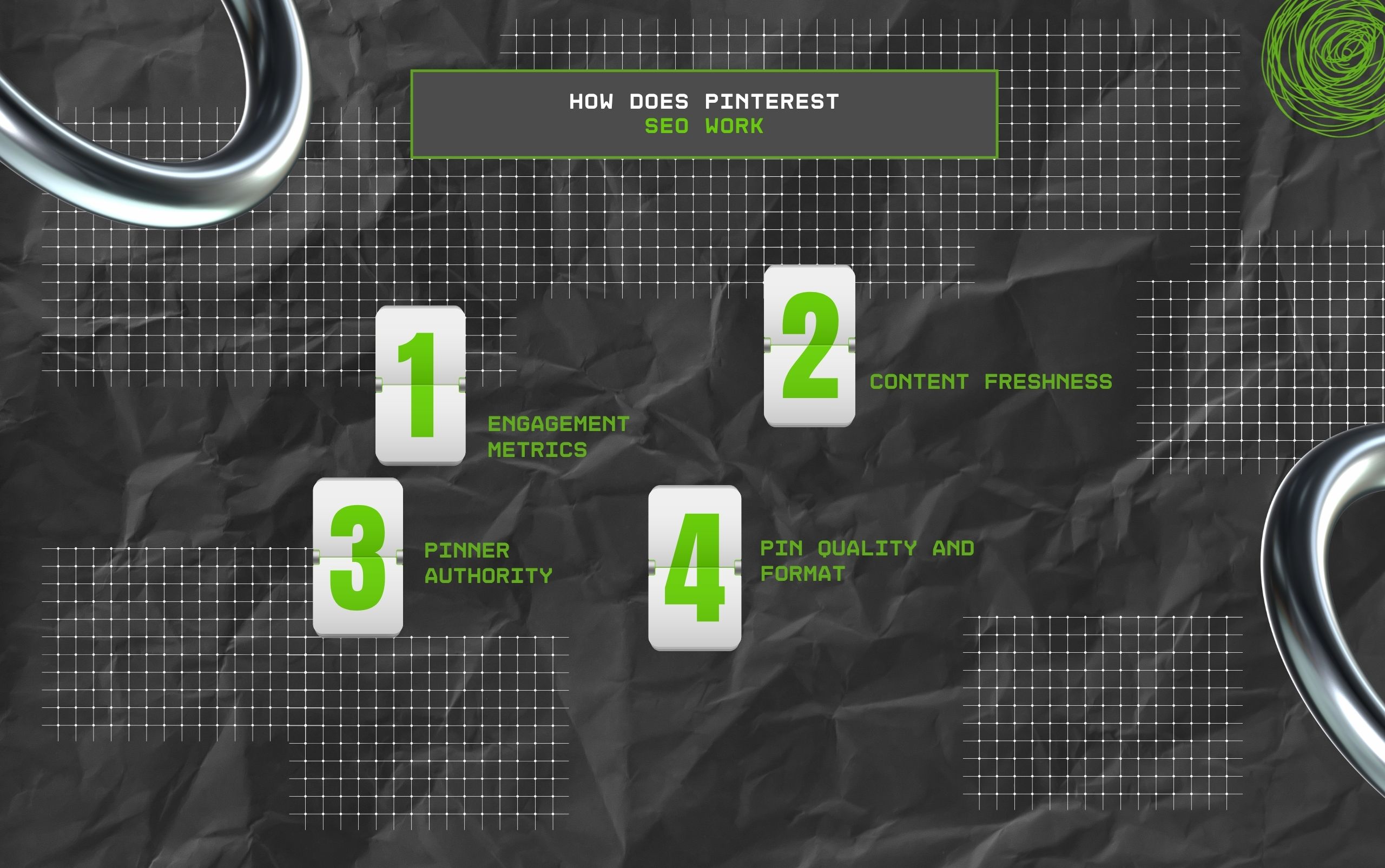
Before diving into how Pinterest SEO works, it is essential to have a comprehensive idea about Pinterest’s ranking model.
Unlike a Google SERP, Pinterest ranks content using a proprietary algorithm — Smart Feed. This personalizes the ranking order based on the user preferences, engagement, and search activity.
So, the key ranking factors of Pinterest include—
So, Pinterest SEO provides strategies and best practices that optimize the content based on these factors. Naturally, the content then ranks better and drives audience engagement.
As a digital platform, Pinterest is quite essential for both bloggers and businesses to promote their products and services.
For a blogger, Pinterest acts as the space offering both inspiration and promotion. So, they can explore the creative, aesthetic, and appealing pins to get inspired.
While also using the same platform to promote their websites. That is, with every pin, they can backlink their website and improve the organic traffic or conversion rates.
According to the Reddit user’s comment on the relevance of Pinterest for bloggers—
“Yes, Pinterest can be quite effective for getting new visitors to your site. Now with the roll-out of Idea Pins, you can create short pins to promote your blog posts with high-quality images. It’s a great visual way to get the attention of other Pinterest users, you can join group boards and promote your pins there as well with like-minded folks”.
As for businesses, Pinterest can be the best platform to promote their products. Given that Pinterest searches are becoming the new norm, as per the report from Search Engine Land—
“More than a third of consumers — 36% — said they start searches on Pinterest instead of Google”.
So, businesses can use Pinterest SEO to rank on the feed and boost their overall revenue. Moreover, they can also expand their audience base through this social platform.
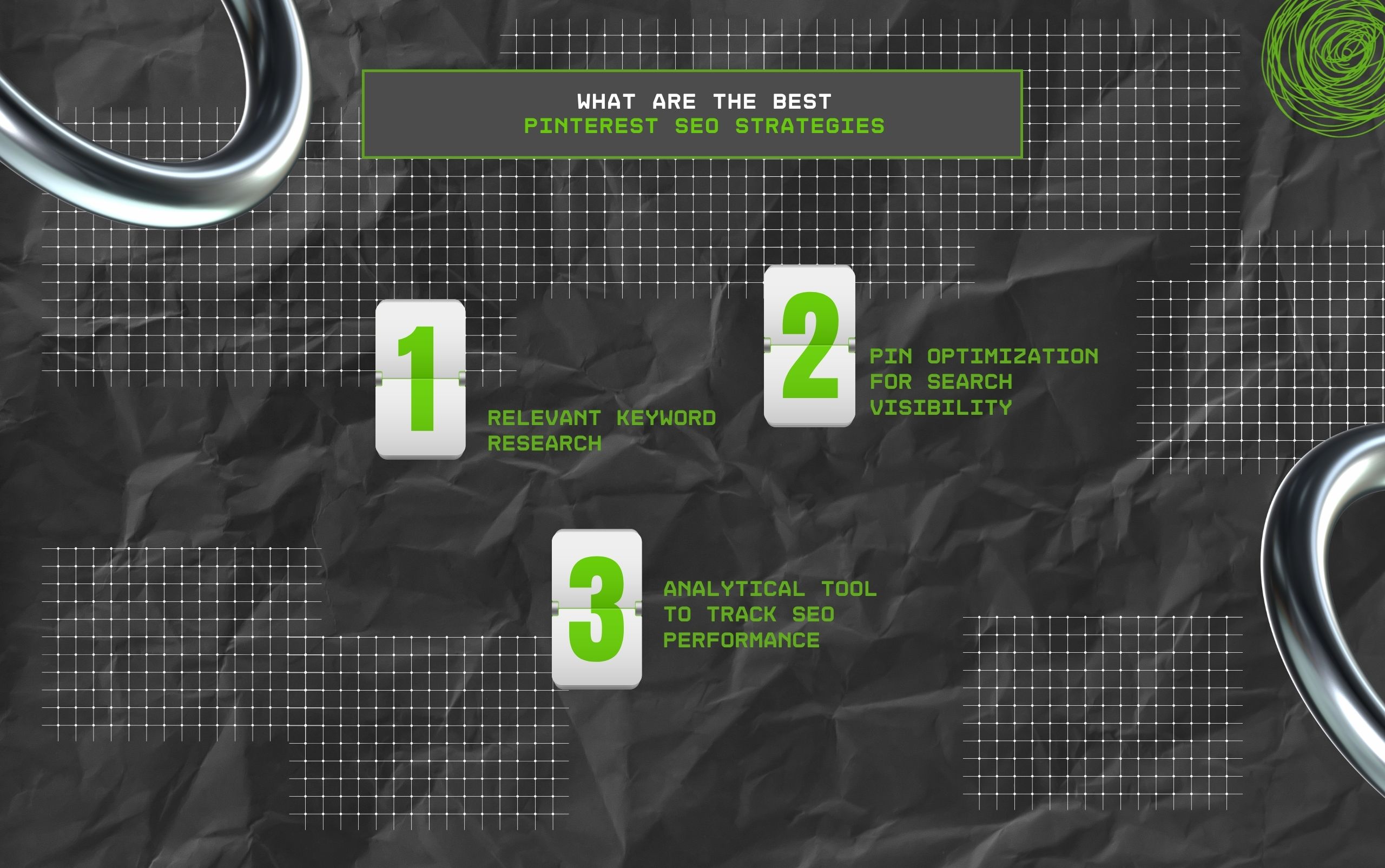
To give a push to your organic website traffic and improve your online visibility, here are some of the best SEO strategies to optimize content for Pinterest—
Keywords are the foundational element for any SEO strategy. So, finding and using relevant keywords on Pinterest is also necessary.
Given that Pinterest searches are technically visual, the keywords for the searches are different. So, there are 2 methods to conduct the keyword research in Pinterest—
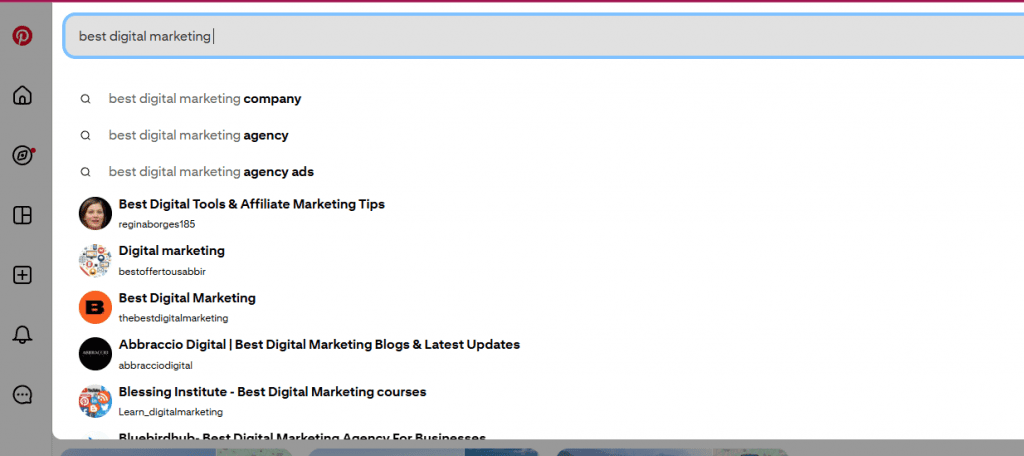
Firstly, users can follow the recommended searches for a specific keyword from the search bar.
So, when the user types in a word in the search bar, Pinterest automatically recommends related searches. Mainly, these are keywords that others are searching for.
As the Reddit user comments on keyword research for Pinterest—
“I used Pinterest to grow my blog, and it’s really about using keyword phrases. You have to apply SEO to Pinterest. I recommend clicking the search bar to see what’s popular and being searched. Also, when you start typing, recommended keywords show up as well that people normally search for”.
So, bloggers and businesses can use these keywords in their content to help Pinterest show their content for the searches. This way, they can improve their online visibility.
Alternatively, bloggers and businesses can follow the search volume of the Pinterest trends to compare popular keywords and use them.
So, for that, they need to visit the Pinterest Business Account and enter the relevant keywords. Then, they can check the volume and related trending keywords.
And, based on these insights, they can choose the keywords that bring more visibility to their content.
Optimizing pins based on the ranking factors can immensely improve ranking and gain visibility. From pin designs to descriptions, all needs to be clear, engaging, and optimized.

So, bloggers and businesses need to optimize the pins in the following way—
Apart from this, the pin titles should be within the optimized range. That is, creating a compelling title within 40 – 100 characters, having the keyword at the beginning.
Moreover, the description for the pin should be conversational, have primary and secondary keywords, and include a clear call-to-action. This way, the pin is optimized to appear for searches.
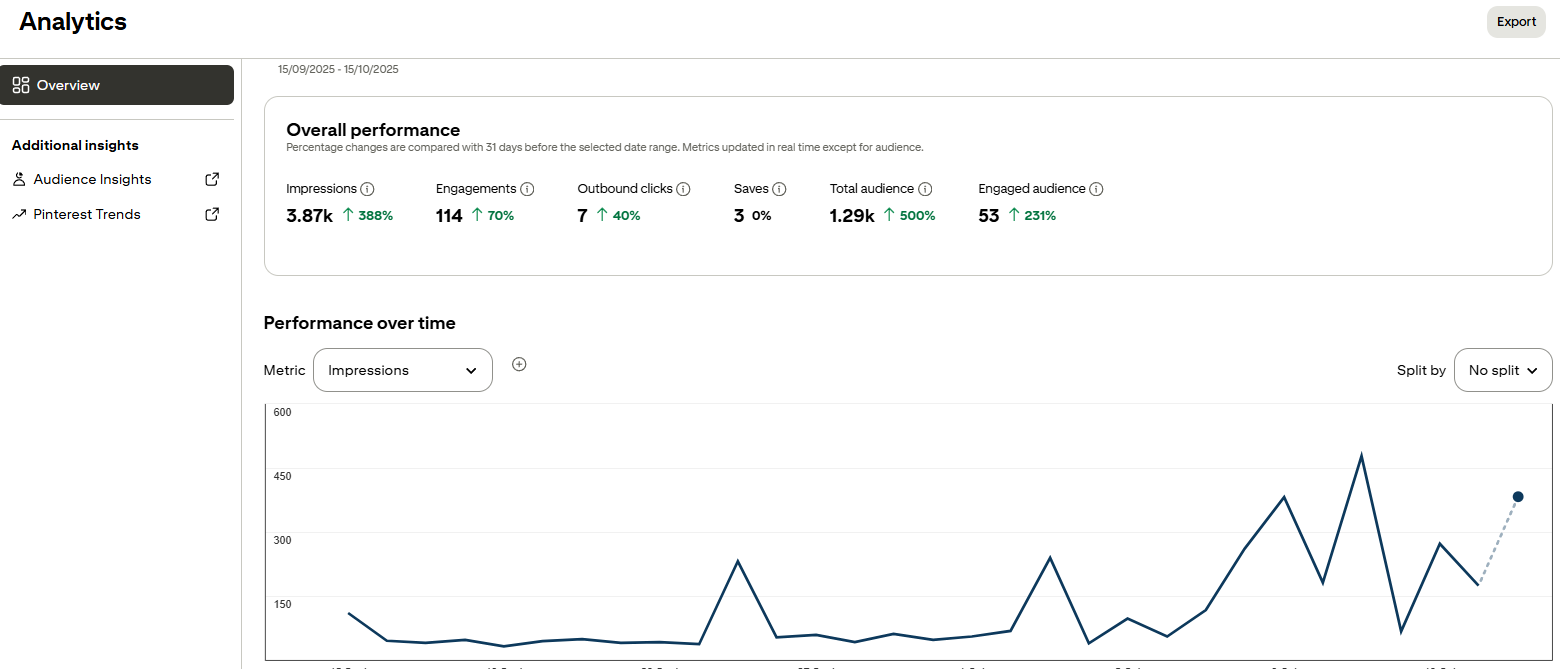
Finally, businesses can use an analytical tool to track and monitor the SEO performance for their pins.
So, they can adjust strategies and make necessary changes to improve their visibility and audience engagement.
Unlike other social media platforms, Pinterest comes with a built-in analytical tool — Pinterest Analytics — which helps in assessing the performance of the pins.
That is, it provides deep insights about the user search behavior, pin engagement, and ongoing Pinterest trends. So, businesses can use them for monitoring and adjusting their strategies.
Some of the key metrics analyzed by the tool are—
So, based on these insights, it is easier to understand how the pins are performing, identify what is not working, and what should be changed to improve the stats.
Just knowing the SEO practices is not enough. To ensure you are utilizing Pinterest SEO properly, your strategies need to be perfect. That is, there should be no mistakes.
So, here are some of the common mistakes to avoid for building a foolproof Pinterest SEO strategy—
Now, building online visibility and boosting organic traffic is difficult. But by using the right Pinterest SEO, anyone can achieve it in a jiffy.
So, with this complete guide in hand, what’s stopping you? Go ahead and optimize your Pinterest and skyrocket your website traffic today!
As Pinterest SEO is trending, here are some common questions around it.
Apparently, SEO for Pinterest and Google might seem similar. But there is a stark difference between them. Google SEO focuses on backlinks, technical SEO, and domain authority for ranking content. But Pinterest SEO prioritizes engagement metrics and visual relevance to rank content. So, they have many differences.
Relevant keywords in pin descriptions and titles immensely improve their impression. That is, Pinterest ranks the content and shows it in users’ feeds based on the relevant keywords. So, this helps in enhancing engagement, visibility, and driving organic traffic.
Given that Pinterest ranks content based on engagement metrics, any kind of audience interaction matters a lot. Moreover, pin engagement directly signals the Pinterest algorithm to consider the content as valuable and interactive. So, it ranks the pin for searches and shows the content for relevant feeds.
If your Pinterest traffic is not increasing, it can be because of these few reasons—
‣ Inconsistent pins posted over time.
‣ Seasonal fluctuations in trends.
‣ Lack of freshness in content.
‣ Presence of duplicate content.
‣ Less optimized use of relevant keywords.
Some of the best tools of Pinterest SEO include—
‣ KeySearch — Useful for keyword research.
‣ Pindodo — Comprehensive insights on ranking pins.
‣ Pin Clicks — Great for finding ranking keywords and comparing with competitors.
‣ Tailwind — Best for analytical insights and scheduled posting.
‣ Canva — Offers tools and space for creating compelling pins.
If you are viewing a Pinterest SEO decline, here are the recovery steps to improve the situation—
‣ Firstly, identify the main reason behind the traffic drop from the insights of the analytical tools.
‣ Then, modify the content strategy and SEO practices for the pins.
‣ After that, optimize your profile and content with the SEO rules.
‣ Then, regularly post the pins and engage with the audience.
‣ Finally, avoid making mistakes and ignoring broken links.
Barsha is a seasoned digital marketing writer with a focus on SEO, content marketing, and conversion-driven copy. With 7 years of experience in crafting high-performing content for startups, agencies, and established brands, Barsha brings strategic insight and storytelling together to drive online growth. When not writing, Barsha spends time obsessing over conspiracy theories, the latest Google algorithm changes, and content trends.
View all Posts
What Does ML Mean In Text? Decoding The Soc...
Nov 28, 2025
What Does DTM Mean In Text? One Acronym, Mu...
Nov 28, 2025
What Does HY Mean In Text? Deciphering Its ...
Nov 28, 2025
Is PeopleLooker Legit? Finding Public Backg...
Nov 28, 2025
Longest Snapchat Streaks: How To Trend With Y...
Nov 27, 2025
